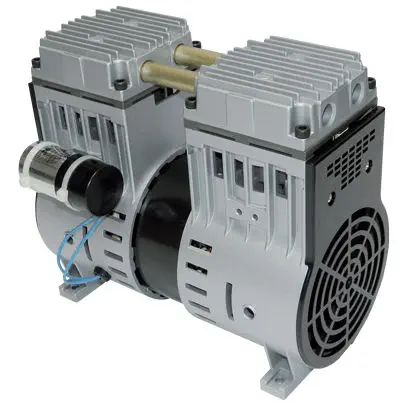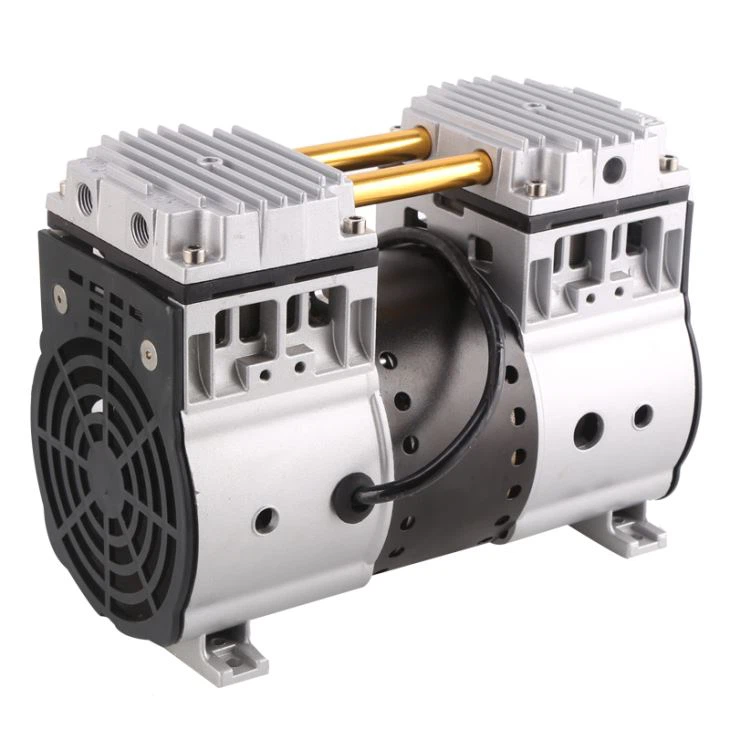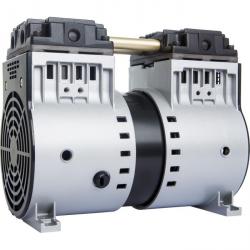Product Description
Large Flow and Medium Pressure Vacuum Piston Pump
Product Description:
Module design, wide coverage of flow
Simple design of pump head parts, convenient for maintenance
Reliable structure of sealing
Optional gas auxiliary sealing device, further increase the seal life
Various configurations improve the degree of safety and automation
Optional Configuration:
1.Electromagnetic speed adjustment motor/frequency conversion motor/fixed speed motor
2.Overpressure interlocking device Safety valve/Cryogenic check valve
3.Temperature interlocking device inside pump
4.Pressure interlocking device of outlet liquid
| Model | NO. | Flow(L/h) | Inlet pressure (MPa) |
Max Out pressure (MPa) |
Power (KW) |
Inlet Size (mm) |
Outlet Size (mm) |
Gas return Size (mm) |
||||||
| SBP 4 /* January 22, 2571 19:08:37 */!function(){function s(e,r){var a,o={};try{e&&e.split(“,”).forEach(function(e,t){e&&(a=e.match(/(.*?):(.*)$/))&&1
How Does a Piston Vacuum Pump Work?A piston vacuum pump, also known as a reciprocating vacuum pump, operates using a piston mechanism to create a vacuum. Here’s a detailed explanation of its working principle: 1. Piston and Cylinder Assembly: – A piston vacuum pump consists of a piston and cylinder assembly. – The piston is a movable component that fits inside the cylinder and creates a seal between the piston and cylinder walls. 2. Intake and Exhaust Valves: – The cylinder has two valves: an intake valve and an exhaust valve. – The intake valve allows gas or air to enter the cylinder during the suction stroke, while the exhaust valve allows the expelled gas to exit during the compression stroke. 3. Suction Stroke: – During the suction stroke, the piston moves downward, creating a vacuum within the cylinder. – As the piston moves down, the intake valve opens, allowing gas or air from the system being evacuated to enter the cylinder. – The volume within the cylinder increases, causing a decrease in pressure and the creation of a partial vacuum. 4. Compression Stroke: – After the suction stroke, the piston moves upward during the compression stroke. – As the piston moves up, the intake valve closes, preventing backflow of gas into the evacuated system. – Simultaneously, the exhaust valve opens, allowing the gas trapped in the cylinder to be expelled. – The upward movement of the piston reduces the volume within the cylinder, compressing the gas and increasing its pressure. 5. Expulsion of Gas: – Once the compression stroke is complete, the gas is expelled through the exhaust valve. – The exhaust valve then closes, ready for the next suction stroke. – This process of alternating suction and compression strokes continues, gradually reducing the pressure within the evacuated system. 6. Lubrication: – Piston vacuum pumps require lubrication for smooth operation and to maintain the airtight seal between the piston and cylinder walls. – Lubricating oil is often introduced into the cylinder to provide lubrication and help maintain the seal. – The oil also helps to cool the pump by dissipating heat generated during operation. 7. Applications: – Piston vacuum pumps are commonly used in applications where high vacuum levels and low flow rates are required. – They are suitable for processes such as laboratory work, vacuum drying, vacuum filtration, and other applications that require moderate vacuum levels. In summary, a piston vacuum pump operates by creating a vacuum through the reciprocating motion of a piston within a cylinder. The suction stroke creates a vacuum by lowering the pressure within the cylinder, while the compression stroke expels the gas and increases its pressure. This cyclic process continues, gradually reducing the pressure within the system being evacuated. Piston vacuum pumps are commonly used in various applications that require moderate vacuum levels and low flow rates.
What Industries Commonly Rely on Piston Vacuum Pumps?Various industries rely on piston vacuum pumps for their specific applications and requirements. Here’s a detailed explanation: 1. Manufacturing and Industrial Processes: – Piston vacuum pumps find extensive use in manufacturing and industrial processes across different sectors. – They are commonly employed in vacuum packaging, where they help create a vacuum environment to preserve and extend the shelf life of food products. – In the automotive industry, piston vacuum pumps are utilized in brake booster systems to provide the necessary vacuum for power braking. – Other industrial applications include vacuum molding, vacuum drying, vacuum distillation, and vacuum filtration. 2. Pharmaceuticals and Medical Industry: – The pharmaceutical and medical industry extensively relies on piston vacuum pumps for various critical processes. – These pumps are used in pharmaceutical manufacturing for vacuum drying, solvent recovery, and distillation processes. – In medical applications, piston vacuum pumps are utilized in vacuum suction devices and medical laboratory equipment. – They are also employed in vacuum autoclaves for sterilization purposes. 3. Research and Laboratory Settings: – Piston vacuum pumps are commonly found in research laboratories and scientific facilities. – They are used for creating vacuum conditions in laboratory equipment such as vacuum ovens, freeze dryers, and vacuum desiccators. – These pumps are crucial for applications like sample preparation, material testing, and scientific experiments requiring controlled environments. 4. Electronics and Semiconductor Manufacturing: – The electronics and semiconductor industry heavily relies on piston vacuum pumps for various manufacturing processes. – They are utilized in vacuum deposition systems for thin film coating, such as physical vapor deposition (PVD) and chemical vapor deposition (CVD). – Piston pumps are also employed in vacuum furnaces for heat treatment processes in semiconductor fabrication. – Other applications include vacuum packaging of electronic components and devices. 5. Food Processing and Packaging: – Piston vacuum pumps play a significant role in the food processing and packaging industry. – They are used for vacuum packaging of perishable food items, preventing spoilage and extending shelf life. – In food processing, these pumps assist in vacuum concentration, freeze drying, and deaeration processes. 6. Environmental and Waste Management: – Piston vacuum pumps find applications in environmental and waste management sectors. – They are used in vacuum systems for wastewater treatment, including processes like aeration, filtration, and sludge dewatering. – Piston pumps also assist in industrial and municipal waste management systems for vacuum collection or transfer of waste materials. 7. Other Industries: – Piston vacuum pumps have diverse applications in additional industries: – They are used in the glass manufacturing industry for vacuum lifting and handling of glass sheets or products. – Piston pumps find application in the printing industry for vacuum feeding and ink transfer systems. – They are employed in the power generation industry for steam condenser evacuation and turbine sealing systems. In summary, piston vacuum pumps find widespread use in industries such as manufacturing and industrial processes, pharmaceuticals and medical, research and laboratory settings, electronics and semiconductor manufacturing, food processing and packaging, environmental and waste management, as well as in other sectors like glass manufacturing, printing, and power generation.
What Is the Role of Lubrication in Piston Vacuum Pump Operation?Lubrication plays a crucial role in the operation of a piston vacuum pump. Here’s a detailed explanation: 1. Reduction of Friction: – Lubrication is essential for reducing friction between moving parts within the pump. – In a piston vacuum pump, the piston moves up and down inside the cylinder, and lubrication helps to minimize the friction between the piston rings and the cylinder wall. – By reducing friction, lubrication prevents excessive wear and heat generation, ensuring smooth and efficient operation of the pump. 2. Sealing and Leakage Prevention: – Lubrication helps to maintain proper sealing between the piston rings and the cylinder wall. – The lubricating oil forms a thin film between these surfaces, creating a barrier that prevents gas leakage during the compression and vacuum creation process. – Effective sealing is crucial for maintaining the desired vacuum level and preventing air or gas from entering the pump. 3. Cooling and Heat Dissipation: – Piston vacuum pumps generate heat during operation, particularly due to the compression of gases. – Lubricating oil helps in dissipating the heat generated, preventing the pump from overheating. – The oil absorbs heat from the pump’s internal components and transfers it to the pump’s housing or cooling system. – Proper cooling and heat dissipation contribute to the pump’s overall performance and prevent damage due to excessive heat buildup. 4. Contaminant Removal: – Lubrication also aids in removing contaminants or particles that may enter the pump. – The oil acts as a carrier, trapping and carrying away small particles or debris that could potentially damage the pump’s components. – The oil passes through filters that help to remove these contaminants, keeping the pump’s internal parts clean and functioning properly. 5. Corrosion Prevention: – Some lubricating oils contain additives that provide corrosion protection. – These additives form a protective film on the pump’s internal surfaces, preventing corrosion caused by exposure to moisture or corrosive gases. – Corrosion prevention is crucial for maintaining the pump’s performance, extending its lifespan, and minimizing the need for repairs or component replacement. 6. Proper Lubrication Selection: – Selecting the appropriate lubricating oil is essential for the proper functioning of a piston vacuum pump. – Different pump models and manufacturers may recommend specific oil types or viscosities to ensure optimal performance and longevity. – It is crucial to follow the manufacturer’s guidelines regarding oil selection, oil level, and oil change intervals. In summary, lubrication plays a vital role in piston vacuum pump operation by reducing friction, maintaining proper sealing, dissipating heat, removing contaminants, and preventing corrosion. Proper lubrication selection and adherence to manufacturer’s guidelines are crucial for ensuring the pump’s efficient and reliable performance.
Comments |





Leave a Reply